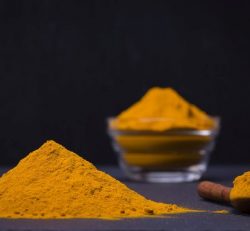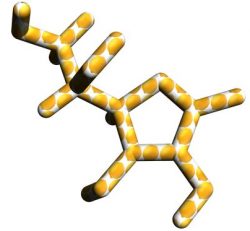A 5 STEP GUIDE ON HOW TO ASSESS PLANT EXTRACTS
The interest for phytomolecules in animal diets is increasing, fuelled by global efforts to reduce in-feed antibiotics and to promote gut health in livestock animals. But what determines a good plant extract and/or essential oil? The amount of phytomolecules that are entering the market is big and no wonder end users can sometimes be confused about what to choose and why. This is why animal nutrition company Pancosma has developed the FITEK method (FITEK stands for F: formula, I: investment, T: technology, E: experience and K: knowledge). Here we explain what it entails.

Formula: “As a final user, I want to know the exact formula and my guarantees”
To know the clear and complete product formula is probably the key aspect for a good additive evaluation. The formula information relies on the provider declaration and can normally be found on legal documents such as labels and the Material safety datasheet (MSDS). Generally, only dangerous molecules appear on the MSDS. Thus, the MSDS is not always the best document in which to find formula information. Very few companies also guarantee the minimum content in active ingredients through their certificate of analysis. This composition is the starting point to check the compliance of the product with local regulations.
a) Asking for composition: Which ingredients constitute the additive?
All ingredients contained in the product should be declared to the user. Any active molecule should be referenced with a clear designation of its origin (is it an essential oil, an extract, a tincture, an oleoresin, a synthetic molecule?) permitting the validity for its use in the given country where the user is operating to be checked.
b) Understanding the nature of the actives: Are the ingredients nature-identical or 100% natural?
There is some market confusion between these 2 categories. Nature-identical ingredients are frequently used and most of the time allowed by regulations, as active ingredients. Their use in formulation can provide a better availability than the natural source, a higher purity in active ingredient thanks to standardisation technics and can support the sustainability of its natural source. The use of these nature identical molecules should be explained and justified to the user. From the fully natural side of the set of available ingredients, following main categories exist. They are classified hereafter from the less standardised to the most standardised categories:
• Dried herbs (e.g: garlic, cinnamon powder…)
Their use is still quite important in Asia where human traditional medicine practices are still very much used in animal nutrition. They consist in the use of dried & then grinded part of the plants. Their use in final feed requires specific amounts (> 1 kg /Metric tonne) to get the minimum quantity of active molecules. By consequence, their inclusion cost is not negligible. Also because of natural variation in plant composition (climate, harvesting conditions…) the daily intake by animals in active ingredients remains unknown and difficult to assess.
• Essential oils (e.g: oregano, eucalyptus essential oils…)These are mainly obtained by extraction through water distillation, often using steam. This process of extraction is not selective and it extracts all the volatile active molecules. The final composition of essential oil is also variable and its quality heavily depends on the place where the plant was grown for example. On the feed market, few essential oils are really fully standardised, this quality being mainly acceptable in terms of price rather for human neutraceutical industries.
• Oleoresins (e.g: chili pepper, turmeric oleoresins…)
These are obtained by a selective process of extraction using a set of different solvents. These solvents are chosen depending on their affinity with the targeted active ingredient. Different levels of standardisation are then available to formulators. For example, Capsicum oleoresin can be extracted from red chili peppers – 1 can contain from 1 to 7% of capsaicinoids active ingredient.
Difference between main categories of rawmaterials.

By All About Feed
c) Requiring clear guarantees on active ingredient to the provider
Once the clear composition is known from the supplier, asking for minimum content in active ingredient is a must! This type of information could be then communicated on the certificate of analysis. It ensures the final user that any batch of the same product will be identical in time and that final field results obtained will be consistent with what was observed during the experimental trial run on animals.
Investment: “as a final user, I want to know my ROI and I want it consistent in the field!”
The use of an additive based on phytomolecules has 2 main objectives:
- The first and most common is to improve users benefits (promoting growth, reducing veterinary treatments…) and
- The second to help formulators in replacing chemical molecules (intended to be forbidden such as antibiotics growth promoters).
These 2 strategies are quite different and their validation will most of the time rely on experimental trials. The zootechnical results obtained will help to calculate a return on investment for the user. Various experience showed that repeating the same trial several times might be important to really conclude the efficacy of an additive. The cost of inclusion, and by consequence the recommended dose of the additive, are parameters directly influencing ROI. Therefore, the most concentrated version of an additive will necessarily increase benefits, reducing its inclusion cost. Finally, it is highly recommended to the user to check the conformity of the recommended dose by the supplier with the one approved in scientific publications related to efficacy of the product. It is very common to meet with providers recommending lower doses than the one approved by the scientific community, in order to reduce inclusion costs. This could dramatically affect performance!
Technology: “as a final user, I want the additive to be stable and resistant!”
Phytomolecules can be formulated following different types of manufacturing processes. The most observed is the absorption of liquid raw materials on absorbing carrier such as silica. The mixture can be then diluted with Calcium carbonate, salts or sugar. The main disadvantage of this is the lack of protection of the ingredient and the high losses in active ingredient in time or during feed manufacturing process. This is why, nowadays, more and more suppliers now invest in encapsulation technologies. These elaborated processes are more costly and aim to protect the actives in a matrix, which will then be optimally digested by animals.
Experience: “as a final user, I want a provider with deep experience!”
The recent increase in interest for plant extract based product has clearly opened the market to new actors. Many companies historically focusing on different types of additives are now trying to establish themselves in this segment. Usually coming from different business models, these companies may struggle to answer the requirements of this business and are often temped to simply extend their raw material portfolio to include plant extracts, without modifying their research strategy or quality control procedures. In countries in the European commission, there is a standard of reference which can help to assess which providers are fully competent on this segment. In fact, EFSA is regularly evaluating additives based on plant extracts in the aim of upgrading them from sensorial to zootechnical category. This evaluation is very complete, from production of the raw materials, to safety and performance. The final opinion released by EFSA experts is generally really interesting. All the reports are public and available online. Finally, the leading companies of this segment are also easily identifiable thanks to their active participation in FEFANA or the European consortium (FFAC) in actually studying the future of botanical in Europe.
Knowledge: “as a final user, I want the provider to understand its product mode of action!”
The first plant extract based products were launched in the 90’s in Europe. At the time, antibiotics as growth promoters were still allowed but their ban was starting to become a reality. In that context, most of the products were first developed to replace AGPs, it was their primary objective. Research programmes around plant extracts therefore looked first at their antimicrobial effect. Most of the studies were made in-vitro and using doses of extracts far above the reality in feed. During decades, the industry believed in this mode of action and focused on this application. Later and when research technologies evolved, the market understood that the real effect of AGPs in animals were not well defined. Controversial publications (Niewold, 2006) started to talk about the potential anti-inflammatory effect of AGPs and opened a new research pipeline for plant extract development. Nowadays, some providers of plant extract products are dedicating their research to the clear understanding of the plant extract mode of action, beyond any antimicrobial effects achieved with unrealistic high dose. A new wave now consists, clearly identifying the gut receptors that plant extract may trigger, as well as the cascade of metabolic changes induced by this action. It creates huge opportunities for animal feed as well as for human medicine.
Conclusion
Despite the huge amount of available information on phytomolecules, it is possible for their users to evaluate the different available additives on the market. This evaluation should be objective and repeatable. The FITEK method described in this article provides a standard grid for a complete assessment. Providers of phytomolecules remain the first allies to answer the questions raised by the user. Beyond additive performance, a wide set of information should be provided and guaranteed ensure the performance levels observed during the evaluation are consistent when using the additive in field conditions.
Jennifer Maurin
Correspondent
Source: www.allaboutfeed.net
















